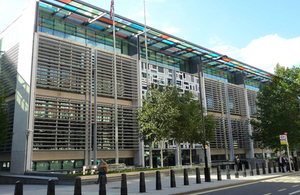Eco-homes don't have to be 'eco-bling'
Housing Minister Grant Shapps has today warned that a lack of creativity could lead to Scandinavian-style “eco-bling” homes dominating our neighbourhoods…

Housing Minister Grant Shapps has today warned that a lack of creativity could lead to Scandinavian-style “eco-bling” homes dominating our neighbourhoods over the next five years, as housebuilders prepare to go zero carbon in 2016.
He urged architects to go back to their drawing boards, and start finding ways to ‘green up’ the Great British home.
Mr Shapps today opened the ‘Natural House’, a low-carbon property developed by the Prince’s Foundation at the Building Research Establishment in Watford. The property has been constructed to a traditional design using new low-carbon and low energy technologies.
There, the Minister reminded current and prospective homeowners that from 2016 all new homes must be built to a zero carbon standard. But he also argued that the “Natural House” demonstrates that British design will still have a place on our streets and does not need to be replaced by Scandinavian-style, ‘eco-bling’ properties that “wear their green credentials for all to see”.
He therefore insisted that turning zero carbon in 2016 should not mean the end of the Great British home - whether it apes the Victorian terraces of the cities, or the cottages that dominate the streets of rural villages - which could be built to be eco-friendly just as well a the glass-fronted properties that have proved just as popular as more traditional designs.
Grant Shapps said:
We all know the Scandinavian-style homes that feature on property programmes - wearing their green credentials for all to see. These are popular and display a high quality of design and craftsmanship. But a lack of creativity could mean this eco-bling dominates our neighbourhoods in as little as five years - I am clear that the beginning of zero carbon does not need to mean the end of Great British design.
That’s why between now and 2016 when all new homes must be zero carbon, I want developers and designers to go back to their drawing boards and see how they can ‘green up’ our traditional, British properties. People want to buy homes, not causes and just because a home is greener does not mean it can’t reflect the character of the local area.
With the Natural House in Watford, the Prince’s Foundation has proved that Great British design doesn’t need to be sacrificed to make our homes zero carbon. And as we move towards 2016, I want local people themselves to have their say, working with the Design Council to shape the future designs of their area to make them cleaner and greener.
Notes to editors
1. On 17 May 2011, Grant Shapps published his proposals for a Zero Carbon Standard. Details can be found at: www.communities.gov.uk/news/corporate/1905491.
2. Communities now have greater opportunities to have their say on how their areas should look and feel in the future. In February 2011 Ministers confirmed that the Design Council would expand to take in many of the activities, skills, knowledge and expertise from the Commission for Architecture and the Built Environment, creating a one-stop shop offering a service to industry, councils and communities.
3. Grant Shapps will today visit the Natural House at the Building Research Establishment. Developed by the Prince’s Trust and built to a traditional design, the Natural House has been constructed using a variety of techniques to keep it low-carbon and low-energy.
These include:
-
thermoplan blocks, which trap air in pockets to provide high levels of insulation
-
carbon-light materials including wood-framed windows, lime render on the walls and slate tiles on the roof
-
a unique ventilation system drawing fresh air into the house, with casement windows able to be fully open to let more air in on warmer days
-
the property is also finished internally using wool carpets and organic paints.
Keep up to date with the Department by following us on Twitter (external link).
Media enquiries
Visit our newsroom contacts page for media enquiry contact details.